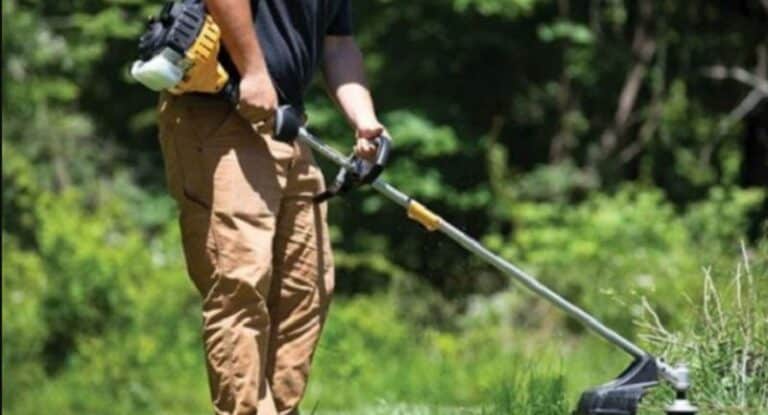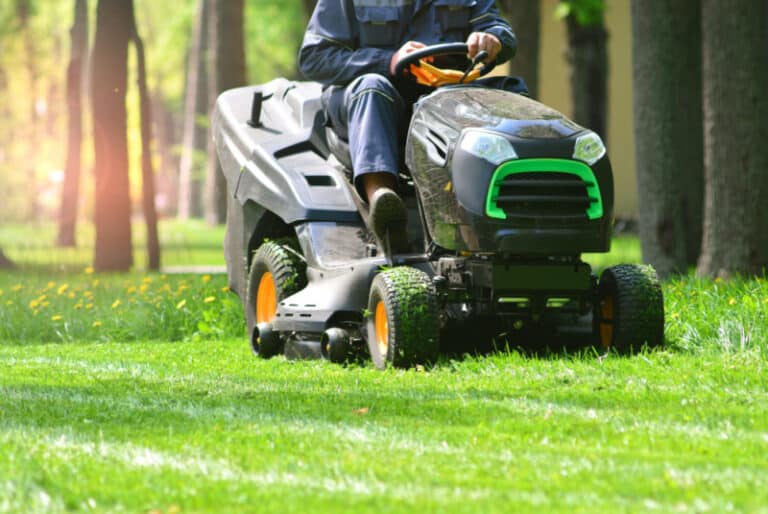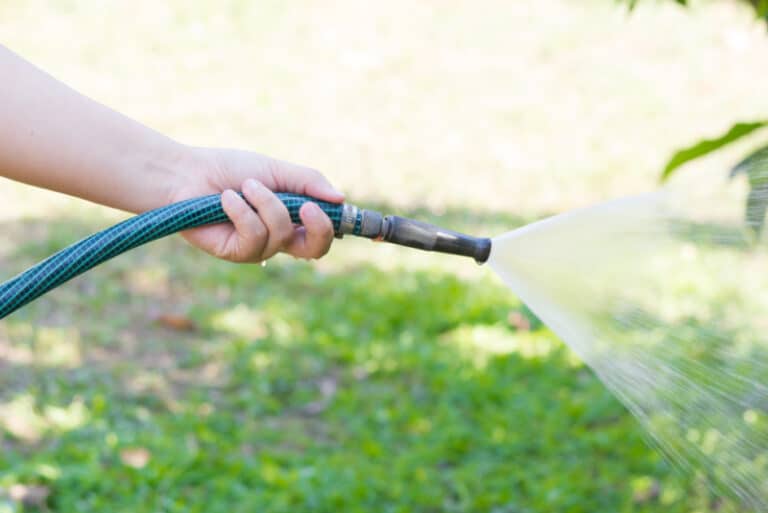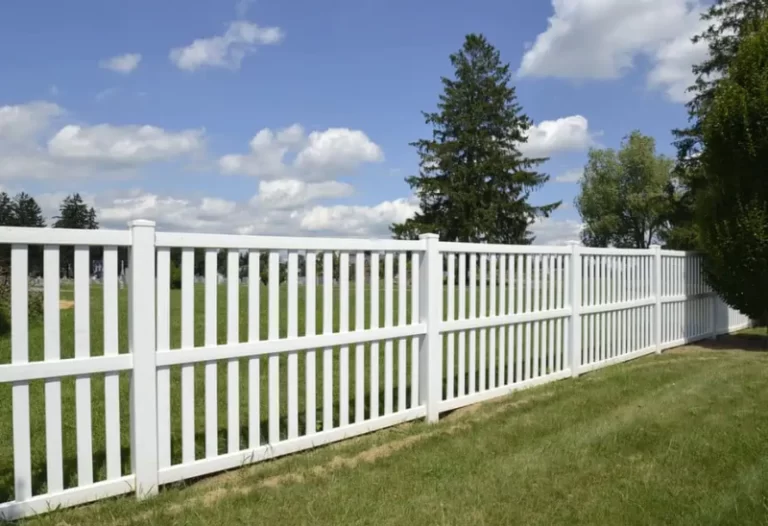Is it Safe to Use Atrazine On Your Lawn?
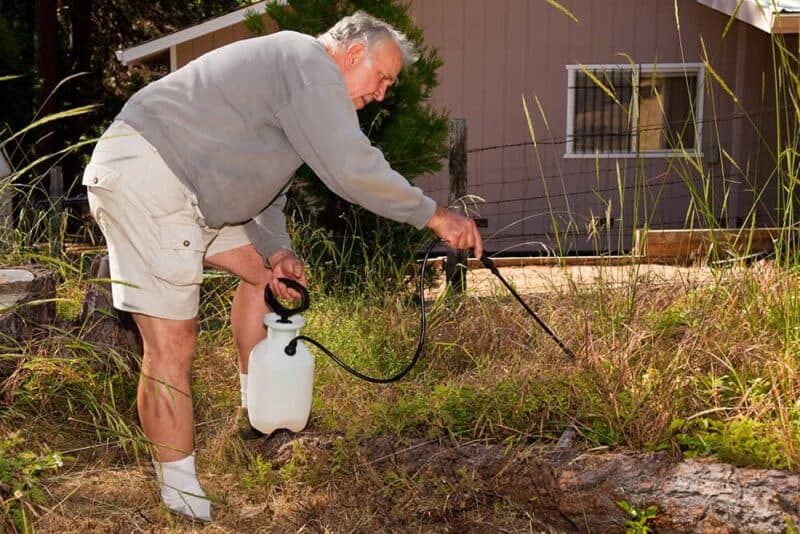
Atrazine is one of the most commonly used pesticides on the market and is commonly found in drinking water due to runoff and various contamination situations. This risk has many people asking if this pesticide is safe to use on lawns or if it should be ignored. Answering this question requires a deep look into Atrazine, including what it does and how you can safely apply it without causing a higher danger.
What is Atrazine?
Atrazine is a pre-emergence broadleaf pesticide and herbicide that is designed to help eliminate various weeds and pests and help crops grow more effectively. This pesticide is heavily used throughout America and Australia and received some controversy when it was found to be the most commonly detected pesticide in drinking water. This problem was worsened by a study showing some health issues.
This study stated that Atarazine could affect a person’s hormonal system as an endocrine disruptor, which had many people terrified at the prospect of finding this herbicide in their water. The EPA has ruled in multiple instances that Atrazine does not cause any health risks in people, pointing out that it does not affect amphibian sexual development and that no other scientific testing was necessary.
Some Later Controversy
That said, the EPA also stated in 2013 that it was “difficult to make definitive conclusion” regarding its environmental or health impact. As a result, this triggered some controversy in the medical community, with many claiming that the EPA was not taking this risk seriously. This controversy only worsened when the European Union banned the substance as early as 2004.
The EU banned Atrazine at this time when they found that groundwater levels were far too high and that the company that makes it, Syngenta, could not show that this exposure could be prevented or that these levels were safe. Calls for banning this substance in the United States have increased, with many people being afraid to use Atrazine after reading through several studies.
But is it genuinely unsafe to use this substance? All pesticides have some risk, after all. Is it possible for people to safely use Atrazine without experiencing any complications? Let’s take a deeper look at the overall safety of this product to get an idea of its potential impact. We’ll focus heavily on how it affects people who may get exposed to it through the skin or drinking water.
Is Atrazine Safe?
Multiple studies have found that atrazine has a very low toxicity level and that exposure rarely causes serious side effects. For example, people who breathe in small amounts may get a runny nose or experience redness and swelling in the eyes if it touches these areas. Simply washing out the eyes may help, though exposure in this way is rare and usually only occurs in DIY application methods.
Furthermore, skin exposure may cause mild redness, swelling, and irritation and is not an allergic trigger for most people. Ingesting atrazine may be a bit more toxic, with people who eat it potentially experiencing nose bleeds, facial swelling, salivation, goosebumps, muscular weakness, fatigue, tremors, drooping eyelids, and difficulty breathing. Though rare, eating atrazine in this way is possible.
What About Water Exposure?
The most likely exposure many people are likely to experience is through ingesting water contaminated with atrazine. Water exposure is less risky because water will dissipate some of the atrazine and cause a less concentrated dosage. That doesn’t mean that you may not experience some side effects. It just means that it will take a much larger dosage of water to trigger any problems.
Safety thresholds for this substance will vary depending on its exposure rate. For example, less than 50 milligrams per kilogram of body weight is likely to cause very low toxicity risks when ingested orally. Over 5,000 milligrams per kilogram of body weight likely cause the highest toxicity risks. Inhalation typically triggers low toxicity at 0.05 milligrams per oxygen liter to high toxicity at two milligrams. Dermal exposure is between 200 to 5,000 milligrams per body weight.
One thing to be concerned about is atrazine‘s slow metabolic rate throughout the body. It can take several hours or even a day to pass through the body and can linger in your blood for four hours and may be found in the liver, kidney, blood, and fat cells for long after exposure. Thankfully, atrazine shows no signs of altering or damaging genes, meaning it has almost no cancer risk in people.
Should You Use Atrazine?
Like any pesticide or herbicide, it is important to use atrazine safely to minimize its potential risk. No pesticide or herbicide is going to have zero dangers. Though some studies have been conflicting, it appears that atrazine is reasonably safe to use for most people. If you feel uncomfortable using it on your lawn due to the EU ban, there are other options to consider that may be less troubling to you.
However, if you do plan on using atrazine on your lawn, it is essential to follow the proper guidelines to ensure safety. These simple steps are easy to understand and should be used whenever you apply any pesticide or herbicide to your yard. Doing so can minimize your risk of contamination and give you and your family more protection from chemical risks.
How to Safely Apply Atrazine
If you want to use atrazine on your lawn safely, it is important to follow these steps to ensure a higher level of protection. These steps are not complex but should be carefully followed. They include wearing various protective clothing and diluting your pesticide to minimize its exposure. Follow these steps to properly and safely apply atrazine to your lawn:
- Step One – Protect yourself by wearing latex gloves and footwear, long pants, a long-sleeved shirt, and socks while you apply this product. You may also want to wear goggles, though this step is a bit extreme because you’ll dilute the product in water to avoid eye exposure. Some may want to try it anyway.
- Step Two – Mix the water and herbicide in a clean container, typically mixing 1.5 teaspoons of the atrazine for each gallon of water. Diluting it in this way minimizes it intensity, stops the vapor from going airborne, and protect you and your family. Stir the solution until it fully dissolves.
- Step Three – Spray this mixture on your lawn away from water sources. If you have a well or pond near your home, avoid these areas or simply don’t use atrazine. Make sure that you spray evenly across your lawn, avoiding spraying in the same area twice to minimize contamination risk.
- Step Four – Try to avoid spraying in areas that may lead to runoff, such as on hills that lead to water sources. Sloped areas are particularly dangerous because the atrazine may flow easily to these areas and into the water, causing contamination that may affect your health.
- Step Five – Carefully remove your gloves and protective gear and wash them in hot water and detergent, separate from other clothing. You may want to wash them in a large tub outside and then dispose of the water by sealing it in a tub and taking it to a chemical disposal facility.
This last step may seem a bit extreme to some people. However, it is important to minimize the risk of water contamination in this way to keep your lawn safe. While atrazine isn’t the most dangerous pesticide on the market, its risk makes it wise to get rid of it in this way. Talk to your local officials to identify any place where you can get rid of this contaminated water.
Safety Tips for Using Atrazine
If you plan on using Atrazine on your lawn, it is essential to follow these steps. Doing so can ensure that you safely apply this product and minimize your risk of contaminating your water or other areas near your home:
- Avoid Spraying on Windy Days – If you’re worried about atrazine contamination, avoid spraying on windy days. Wind can carry water vapor far away and may increase your risk of contaminating your water supply if you aren’t careful.
- Keep Atrazine Away From Your Water – Never spray atrazine near water of any kind to keep it from getting into your water source. If you have a well, it is best to simply not use this item because it may easily soak into your well area.
- Avoid Exposure to Pets and Children – Animals and children may be more prone to contamination risks with atrazine than adults. Try to keep your pets and children off your yard for at least 24 hours after spraying, taking your dog to a park if it needs to “go.”
- Always Use Focused Spraying Techniques – Use a focused hand-sprayer that lets you apply your pesticide in specific areas rather than a lawn-wide region. Doing so can ensure that you only spray where necessary, such as near regions near the wees around your home.
You can also read:

